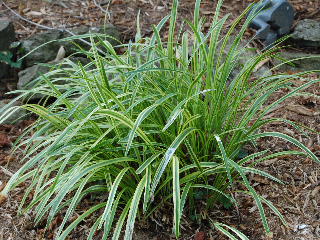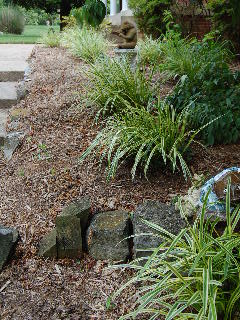
Liriope is one of the least expensive, easiest to grow, and longest lasting plants the home gardener can add to his or her landscape.
Sometimes called lilyturf or monkey grass, liriope is a hardy perennial grass that maintains its deep green coloration throughout most of the year. It does well in temperate climates (zones 6-10 mostly).
Where colder winter temperatures are common, the green leaves may brown out somewhat as a result of harsh freezing conditions. No problem—in the early spring months, just shear off the top growth of your liriope with your string trimmer, hedge clippers, or even the lawn mower.
As the weather starts to warm, you’ll notice new foliage emerging from the base of the plants, thus restoring the lustrous green shimmer to your plants.
Liriope tolerates almost all types of growing conditions, from less-than-desirable levels of soil fertility to varying levels of sun, shade, and partial shade. As long as the plant has adequate moisture, it will survive.
Of course, to grow healthy liriope plants that add fullness and beauty to your landscape, richer organic soils are preferred along with periodic additions of plant food.
Liriope plants make great border plants for defining your sidewalk, driveway, or the edges of landscaped flower and shrub beds.
They also work well as stand alone plants scattered throughout your landscaped areas or when clustered into groupings, provided they have enough room to grow and spread.
Which brings us to one of the more desirable traits of liriope culture as applied to your home landscape. A healthy clump of liriope will “fatten up” in just a couple of growing seasons. The clumps can then be fertilized additionally and allowed to grow together into an attractive ground cover. (This is a good way to treat an uneven hillside area that might otherwise be difficult to maintain.)

Or—and this is a nice bonus—you can dig up the individual clumps, chop them apart into several sections, and thus add 2, 4, or more new liriope plants back into your landscape! Just be sure your have a good portion of roots and top growth on each newly divided clump before you replant.
(Note: A clear demonstration of just how to do this is found in one of our GardenVoice videos on You Tube)
So what’s not to like about liriope? It tolerates varying soil conditions, is undemanding of sun or shade, and even offers you a 2 for 1 deal if you choose to divide it up.
Also, most of the healthy liriope plants will produce small attractive purplish blue flowers in the summer months, thus adding a desirable color contrast to the rich deep green of the liriope foliage.
 Liriope is one of the least expensive, easiest to grow, and longest lasting plants the home gardener can add to his or her landscape.
Liriope is one of the least expensive, easiest to grow, and longest lasting plants the home gardener can add to his or her landscape.
 Or—and this is a nice bonus—you can dig up the individual clumps, chop them apart into several sections, and thus add 2, 4, or more new liriope plants back into your landscape! Just be sure your have a good portion of roots and top growth on each newly divided clump before you replant.
Or—and this is a nice bonus—you can dig up the individual clumps, chop them apart into several sections, and thus add 2, 4, or more new liriope plants back into your landscape! Just be sure your have a good portion of roots and top growth on each newly divided clump before you replant.